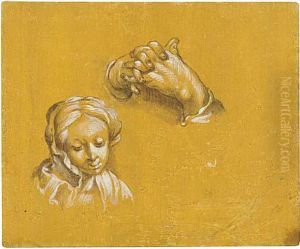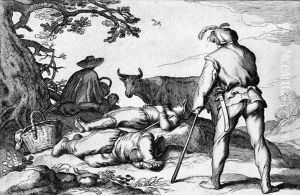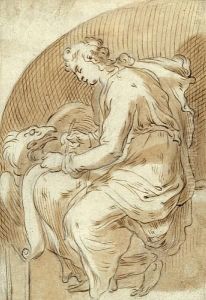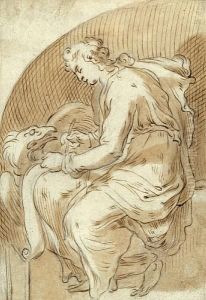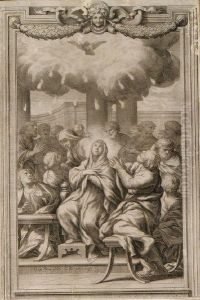Cornelis Ii Blomaert Paintings
Cornelis II Blomaert, or Cornelis Blommaert II, was a Flemish engraver born in 1603 in Antwerp, a city that was then part of the Spanish Netherlands and is now in Belgium. He belonged to a family of artists, and his father, Abraham Blomaert, was a notable painter. Cornelis II was one of several children, and his siblings also pursued careers in the arts.
Blomaert was primarily known for his work as an engraver, a skill he likely learned from his father and possibly from other masters of the time. He worked on translating his father's designs and others' paintings into engravings, which were then widely circulated. This was a common practice in the age before photographic reproduction, as engravings allowed for artworks to be reproduced and disseminated throughout Europe.
His works included religious subjects, portraits, and allegorical scenes. Blomaert's style was typical of the Flemish Baroque period, characterized by detailed representation, dramatic lighting, and an emphasis on movement and emotion in the subjects depicted.
Despite his skill and contributions to the engraving field, Cornelis II Blomaert did not achieve the same level of fame as his father or as other artists of the era. His engravings nonetheless served an important role in the spread of the visual culture of the time and provided a means for the ideas of the Baroque period to travel beyond the borders of their origins.
Cornelis II Blomaert's date of death is recorded as 1682. The latter part of his life is not well-documented, and as a result, there is limited information available about his personal life or the later works he may have produced. His engravings, however, remain as a testament to the skill and craftsmanship of the engravers of the Baroque period and continue to be studied for their artistic and historical value.

